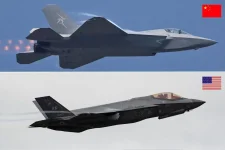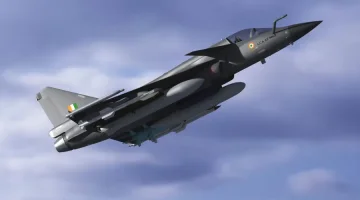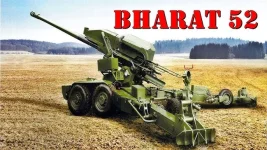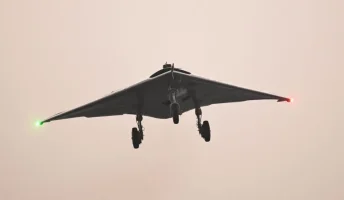- Views: 3K
- Replies: 27

The South Asian air power landscape is poised for a significant shift as India considers acquiring the F-35A Lightning II fighter jet alongside its ongoing development of the indigenous Advanced Medium Combat Aircraft (AMCA).
This move comes as Pakistan explores options to bolster its own fleet with fifth-generation stealth fighters, including the Chinese J-35A and the Turkish KAAN.
Pakistan is reportedly looking to acquire the J-35A, a twin-engine carrier-based stealth fighter developed by China's Shenyang Aircraft Corporation. While boasting features comparable to the F-35, the J-35A is believed to have less advanced avionics and engine performance. Pakistan, with its strong military ties to China, could be the first international customer for this jet.
In addition to the J-35A, Pakistan is also considering the Turkish KAAN fighter, a twin-engine fifth-generation aircraft currently under development by Turkish Aerospace Industries (TAI). Turkey has invited Pakistan to collaborate on the KAAN project, potentially paving the way for Pakistan to acquire these jets in the 2030s.
The combination of J-35A and KAAN fighters could significantly enhance the Pakistan Air Force's capabilities, posing a challenge to India's current air superiority. However, India's potential acquisition of the F-35A, coupled with the development of the AMCA, is anticipated to provide a robust counter to these advancements.
Should India acquire the F-35A, it would mark a historic moment, as it would be the first F-35 operator in 75 years to not have previously flown American-built fighter jets.
The F-35A's cutting-edge stealth technology, advanced sensor fusion, and electronic warfare capabilities would grant India a significant advantage. The F-35A's low observability and network-centric warfare capabilities would enable India to effectively deny airspace access to Pakistani fighters.
Moreover, its advanced AN/APG-81 AESA radar and Distributed Aperture System (DAS) would allow India to track and engage stealth aircraft like the J-35A and KAAN.
In beyond-visual-range (BVR) combat, the F-35A, armed with AIM-120D and AIM-260 JATM missiles, is expected to outperform China's PL-15 and Turkey's Göktuğ missiles.
Furthermore, the F-35A's stealth and electronic warfare capabilities would allow India to conduct precision strikes deep within enemy territory without detection.
Complementing the F-35A, India is developing its own fifth-generation stealth fighter, the AMCA. A product of India's Defence Research and Development Organisation (DRDO) and Hindustan Aeronautics Limited (HAL), the AMCA is expected to enter production by 2035.
The AMCA offers India several key advantages, including indigenous control over technology, unlike Pakistan's reliance on foreign-developed fighters. The AMCA is projected to have stealth capabilities comparable to the J-35A and KAAN, with superior electronic warfare and sensor fusion capabilities compared to Chinese platforms.
Furthermore, the AMCA will be integrated with Indian-developed missiles like the Astra Mk2, Astra Mk3, and future hypersonic weapons.
F-35A and AMCA vs J-35A and KAAN: Key Advantages for India
| Feature | F-35A + AMCA (India) | J-35A + KAAN (Pakistan) |
|---|---|---|
| Stealth | F-35A: Best in class; AMCA: Advanced stealth | J-35A: Inferior to F-35; KAAN: Still in development |
| Radar & Sensors | F-35: AN/APG-81 AESA + DAS; AMCA: Indigenous Uttam AESA radar | J-35A: Chinese AESA (likely weaker); KAAN: Still in testing |
| Weapons | AIM-120D, AIM-260, Astra Mk3, hypersonic missiles | PL-15, Göktuğ (under development) |
| Network Warfare | F-35: Best in the world; AMCA: Designed for network-centric operations | Limited integration, China-Turkey tech collaboration |
| Production Readiness | F-35: Already operational; AMCA: 2035 | J-35A: In testing; KAAN: Uncertain |
By acquiring the F-35A, India would gain immediate fifth-generation air superiority in the region, effectively neutralizing Pakistan's efforts to acquire similar capabilities.
Simultaneously, the AMCA program ensures India's long-term self-reliance in advanced fighter technology, contrasting with Pakistan's dependence on China and Turkey. A combined fleet of F-35As, AMCA, and Rafale F4s would solidify India's air dominance not only in South Asia but also in the broader Indo-Pacific region.




